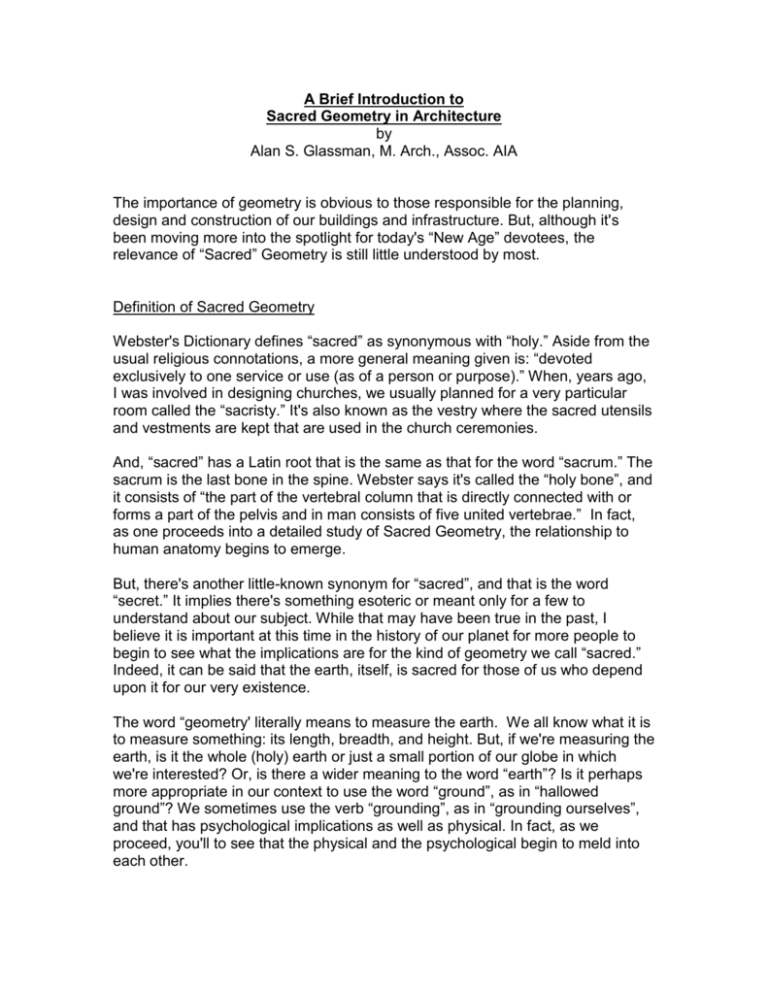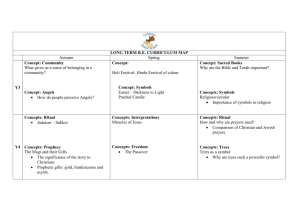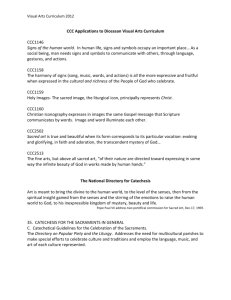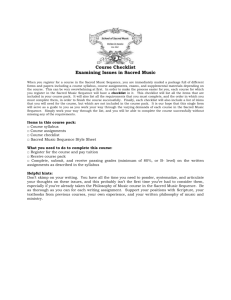
A Brief Introduction to
Sacred Geometry in Architecture
by
Alan S. Glassman, M. Arch., Assoc. AIA
The importance of geometry is obvious to those responsible for the planning,
design and construction of our buildings and infrastructure. But, although it's
been moving more into the spotlight for today's “New Age” devotees, the
relevance of “Sacred” Geometry is still little understood by most.
Definition of Sacred Geometry
Webster's Dictionary defines “sacred” as synonymous with “holy.” Aside from the
usual religious connotations, a more general meaning given is: “devoted
exclusively to one service or use (as of a person or purpose).” When, years ago,
I was involved in designing churches, we usually planned for a very particular
room called the “sacristy.” It's also known as the vestry where the sacred utensils
and vestments are kept that are used in the church ceremonies.
And, “sacred” has a Latin root that is the same as that for the word “sacrum.” The
sacrum is the last bone in the spine. Webster says it's called the “holy bone”, and
it consists of “the part of the vertebral column that is directly connected with or
forms a part of the pelvis and in man consists of five united vertebrae.” In fact,
as one proceeds into a detailed study of Sacred Geometry, the relationship to
human anatomy begins to emerge.
But, there's another little-known synonym for “sacred”, and that is the word
“secret.” It implies there's something esoteric or meant only for a few to
understand about our subject. While that may have been true in the past, I
believe it is important at this time in the history of our planet for more people to
begin to see what the implications are for the kind of geometry we call “sacred.”
Indeed, it can be said that the earth, itself, is sacred for those of us who depend
upon it for our very existence.
The word “geometry' literally means to measure the earth. We all know what it is
to measure something: its length, breadth, and height. But, if we're measuring the
earth, is it the whole (holy) earth or just a small portion of our globe in which
we're interested? Or, is there a wider meaning to the word “earth”? Is it perhaps
more appropriate in our context to use the word “ground”, as in “hallowed
ground”? We sometimes use the verb “grounding”, as in “grounding ourselves”,
and that has psychological implications as well as physical. In fact, as we
proceed, you'll to see that the physical and the psychological begin to meld into
each other.
The Language of Numbers and Symbols
The various languages spoken around the world since the beginning of recorded
history were not the first means of communication between human beings.
Archaeology shows us that early man communicated first by the use of different
kinds of symbols. From symbols came numbers, which are in themselves
particular kinds of symbols. (I can recall in my first year of architecture school we
had an instructor whose background was industrial design. He showed us how
numbers and letters in different typefaces (fonts) were derived and how to
reproduce them and integrate them into our designs. It’s one specialty of the
graphic artist today.)
We know that in distant antiquity man began using a pictorial mode to plan and
design his constructions, whether it was carving into stone or merely tracing with
a stick in sand. As mankind became more sophisticated, sheets of papyrus and
later paper made from wood pulp were drawn upon with paint or ink. Then came
so-called “blueprints” as we know them, first generated by pen or pencil, and
today drawn with the aid of computer-assisted graphic systems. No matter how
they are produced, numbers and symbols remain the universal language of the
building trades, as expressed in abbreviated and reduced scale two-dimensional
representations of what is to be built in three dimensions. We can further see the
possibility of designing directly with 3D representations in the form of holograms.
Nevertheless, numbers and symbols remain the language that is used. While
written construction specifications may describe in letters and words the products
to be employed and define the quality of workmanship, it can only be with
drawings using numbers and symbols that we see how and where those
products are assembled.
Sacred Geometry employs both numbers and symbols, but in very specific ways.
For instance, while similar kinds of graphic representations are used in Sacred
Geometry as are used in working drawings for a building, in Sacred Geometry
they are used in a very specific manner. As Webster says, they are “devoted
exclusively to one service or use….” Symbols in Sacred Geometry have very
unique meanings, although, in keeping with our definition of sacred as secret,
their esoteric meanings are not generally known. Here are a just few of those
symbols:
Φ
□
The language of symbols and numbers (I'm talking about pure numbers here, not
the process of using numbers to make calculations) is the language of certain
human brain faculties that are different from those used to produce and
communicate with the spoken word. As we have noted, some say the language
of symbols is the more primitive form of communication. But, with Sacred
Geometry we begin to get a glimpse of a highly sophisticated symbolic language
that transcends the spoken or written word. It has been shown that language is a
function of the left hemisphere of the human brain (at least for most right-handed
people). So is ordinary mathematical calculation. Symbols, on the other hand,
are interpreted by the right side of the brain, as are pictures and other visual
images. We all know the phrase, “A picture is worth a thousand words.” In
Sacred Geometry, a single shape or form can have very distinctive meanings
that would take many pages, if not volumes, of written words to explain. And,
even then, the deepest hidden meaning recognized only by the intuitive function
of the brain might only be hinted at.
As Above, So Below
Primitive man could see the stars above him at nighttime, unhindered by the
reflection of city lights off clouds and layers of atmosphere. We have discovered
that the Egyptians, the Mayans, the Hindus, and numerous other ancient
civilizations were close watchers of the night skies. We are just now finding out
they knew things we have only come to know with the advent of the telescope.
How they knew as much as they did about the heavens is being investigated by
researchers all over the world. It remains a mystery, but perhaps not for too
much longer.
Perhaps the most striking example of a representation made by the ancients on
earth which reflects something visible in the night sky is the layout of pyramids on
the plateau at Giza, across the Nile River from Cairo, Egypt. In 1994 a book
appeared entitled The Orion Mystery by Robert Bauval and Adrian Gilbert. In it,
the authors make a good case that the three Giza pyramids when viewed from
above form a replica of the position of the three stars in the “belt” of the
constellation Orion. In another book by Bauval and Graham Hancock published
two years later in 1996, The Message of the Sphinx, they extend the theory
showing that other pyramids in the complex at Giza also fit the Orion
constellation. However, because we are now able to calculate star movements
over thousands of years with a computer, the position of the stars in the Belt of
Orion form a match only at a time well before the Giza pyramids are claimed by
Egyptologists to have been built. (More recently, researcher John Anthony West
and geologist Robert Schoch have shown that the erosion around the Sphinx
was caused by water, not wind. It was at least 10,000 years ago that the desert
in northern Africa was a lush and verdant environment with enough rainfall to
account for that erosion. If the first or Great Pyramid at Giza was built at about
the same time as the Sphinx, the earlier date of the correspondence to the Orion
Belt does make sense.)
Since the seminal work of Bauval, Gilbert and Hancock, others have expanded
the search and found numerous ancient sites around the world that (1) replicate
in some manner what we see above us in the night sky, or (2) use the sun, the
planets, and certain bright stars as the basis for orienting their manmade
constructions. Stonehenge in southern England is probably the best known
example of the latter. But, there are hundreds if not thousands more such ruins.
At another scale of measurement, “as below”, we find that certain ancient
structures were undoubtedly patterned after the anatomy of the human being.
The best known work on that score is by R.A. Schwaller de Lubicz, who made a
15-year study of the architecture of Egypt's Temple at Luxor. His great opus, The
Temple of Man, shows how the floor plan of Luxor and its parts mirror the human
body. He even goes so far as to identify various chambers in the Temple with
parts of the brain. (See the front cover drawing of the book The Temple in Man
by Lucy Lamy and R.A. Schwaller de Lubicz at:
http://www.amazon.com/gp/reader/0892810211/ref=sib_dp_pt/103-86832837039058#reader-link)
We find that well after the Egyptians, but probably deriving from them, builders
associated with the Knights Templar encoded images of parts of the human body
within the geometry of the great Marian Gothic Cathedrals in France. All this was
no mere coincidence. And, again “as above”, it has been shown that the overall
pattern of placement for the Marian Cathedrals bears a striking resemblance to
the configuration of stars in the constellation Virgo.
On the molecular scale, we all know that James Watson and Francis Crick
published a paper in 1953 in which they identified the structural shape of DNA as
a double helix. What is not widely known is that a double helix-shaped gas
nebula has recently been discovered lying nearly perpendicular to the massive
black hole at the center of our Milky Way Galaxy. (See “Cosmic 'DNA': Double
Helix Spotted in Space” at:
http://www.space.com/scienceastronomy/060315_dna_nebula.html).
Also, in what we might call the middle ground of the human measurement scale,
we see the double helix represented in architecture, and sacred architecture at
that. The “Apprentice Pillar” inside Scotland's Rosslyn Chapel, made famous by
Dan Brown's Da Vinci Code, illustrates an example on its surface of a double (or
even triple or quadruple) helix carved in stone.
Did the builders of Rosslyn know about DNA and also, perhaps, about the center
of our galaxy? And, as with so many other examples of architecture in the past,
are we seeing a representation of the ancient saying attributed to Hermes
Trismegistus and long the familiar slogan of Sacred Geometry practitioners, “AS
ABOVE, SO BELOW”?
© Alan S. Glassman, 2008 (all rights reserved)








